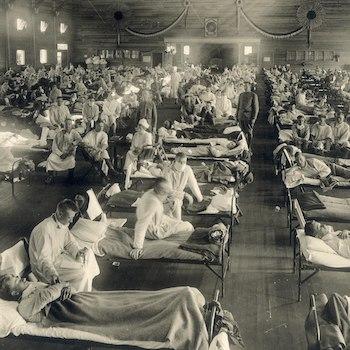Throughout the month of January, the world was gripped by an unfolding drama. Glued to their television sets and social media accounts, people were sharing news stories and punditry, eager to learn of the latest developments.
I speak, of course, not of the coronavirus but of the impeachment of Donald Trump.
Only after its conclusion on February 5 did the American media start to pay closer to attention to COVID-19. And that was the right decision because impeachment was a far bigger story. At the time. In an excellent piece for the center-right National Review, David Harsanyi explains:
"No doubt I’m older than many of you, but I can recall warnings about perhaps a dozen potentially dangerous epidemic breakouts around the world, and none of them ever materialized in a legitimately scary way for us. It’s human nature to assume similar outcomes."
It's not just human to do that; it's scientific as well. When a new microbe pops up, scientists immediately try to determine if it's similar to other things we've seen before. SARS-CoV-2 (the novel coronavirus) was sequenced and found to be about 85% similar to SARS. So it was reasonable (and dare I say, responsible) to conclude that COVID-19 would follow a similar path: that is, it would infect several thousand people and then go away. Likewise, other potentially scary infectious diseases in recent times, like Zika and Ebola, never manifested as major threats to Americans.
Chicken Littles have a very bad track record. It's been over a century since we have encountered an infectious disease this terrifying, which is why betting against Chicken Little is usually safe. But it may be wrong this time around.
The truth is, despite media claims to the contrary, nobody saw this coming (myself included). If you had polled 100 microbiologists a year ago and asked, "A new virus emerges in 2020 and threatens the globe: what is it?" you would have received 100 identical answers: Influenza. Nobody would have said "coronavirus." After all, the last major American epidemic that killed hundreds of thousands people in a single year was the 1918 Spanish flu. In 1957, 1968, and 2009, influenza gave us all a good scare again. Coronavirus, not so much.
Everybody "Knew" Coronavirus Was Coming
But as Mr. Harsanyi wrote, none of this has prevented armchair quarterbacks in the media from re-writing history. For instance, DeSmogBlog -- a climate activist website that is run by an anti-vaxxer -- accused me of "downplaying" the COVID threat. How? Because I cited statistics showing that influenza is a bigger threat to global public health than COVID-19. At this moment in time, that still is true -- the global death toll from influenza is 300,000 to 500,000 -- but COVID-19 is doing its best to dethrone influenza.
Who else noted that influenza is a bigger threat than coronavirus? The Washington Post and Daily Beast, among many other outlets.


And the World Health Organization itself delayed labeling COVID-19 a global public health crisis (a decision, incidentally, for which we criticized them).
They weren't the only ones. Dr. Anthony Fauci himself said on January 21, "This is not a major threat for the people of the United States. And this is not something that the citizens of the United States right now should be worried about." Multiple media outlets, including CNN and MSNBC, gave similar commentary through early March.*
No matter. Some journalists are already claiming that they "knew" COVID-19 was coming. (Mr. Harsanyi correctly asks why they didn't say anything in January.)

We're All Flying Blind
The fact of the matter is that we're all flying blind now. We've never seen a virus quite like this. Data is changing by the minute. The more we learn, the more questions arise. Here is just a sample of the major unknowns:
- How is SARS-CoV-2 primarily transmitted?
- What is the infectious dose? (That is, how many viral particles are necessary to cause disease?)
- How far away is a safe distance from another person? 6 feet? 27 feet?
- How many people are actually infected? How many are asymptomatic?
- What is the actual case-fatality rate? Why does it vary so dramatically between advanced countries like Italy and the United States?
- Are the COVID-19 models reliable?
- Are the diagnostic tests reliable? What is the rate of false positives and false negatives?
- Is the lockdown working? Or is it causing more harm than good?
- Do masks work? (Seriously, we don't even know the answer to something that basic.)
With so many unknowns, the only thing we can be sure of now is that it is nearly impossible to predict what's going to happen. Some of us will try (and risk being wrong), while the rest will play "Monday morning quarterback" and pretend to have known the truth all along.
*Update on 6-Apr-2020 @ 5:44 a.m. ET: This paragraph was added.




